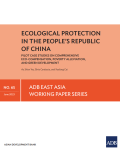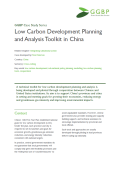The national hectare ecological footprint model was improved in this paper to calculate the ecological footprint of the Chinese Jiangsu Province and 13 prefecture-level cities. By calculating the bioproductive land and water output, ecological footprint analysis estimates the supply and demand of natural capital; thus, quantitatively evaluating the state of regional sustainable development.
The results include calculations of four key indicators—per capital ecological footprint, per capita ecological carrying capacity, per capita ecological deficit, and a GDP ecological footprint per ten thousand yuan. The findings from this analysis illustrate several spatial characteristics, including:
- The spatial distribution of per capita ecological footprint was in accordance with the ecological deficit, characteristically higher in the south and lower in the north, which was opposite to the ecological carrying capacity distribution.
- The spatial character of the ten thousand yuan GDP ecological footprint was higher in southern Jiangsu and lower in northern Jiangsu, which was inversely proportional to the per capita GDP.
- In Jiangsu Province, in the southern and middle Jiangsu areas, the building land and fossil energy land ecological footprint accounted for a considerable proportion. Whereas, in the northern Jiangsu area, the cultivated land and grassland ecological footprint contributed more to the whole ecological footprint.
The results of this study provide theoretical direction and quantitative reference to coordinate the regional development and build ecological civilization in Jiangsu Province.


